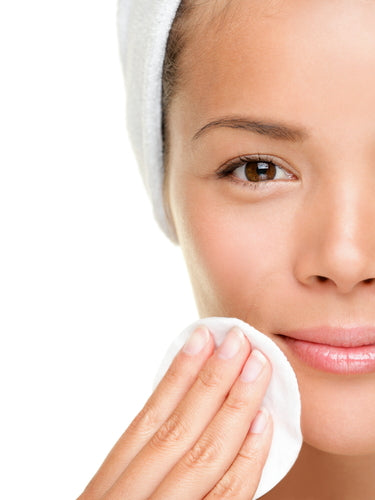Everyone's skin type is unique and requires its own kind of care. Understanding what type of skin you have will help you care for it correctly to optimize comfort, health and beauty.

A Quick and Easy Skin Type Test
This simple exercise will give you some basic information on the type of skin you may be dealing with.
- First, wash your face gently to remove makeup and any dirt and oil that has built up over the course of the day. Then, pat your face dry. Be sure to avoid scrubbing so hard that you irritate your skin.
- Next, simply wait. Give your skin an hour to return to its natural state. Be careful not to touch it during this time, as you don't want to reintroduce dirt and oil to the skin.
- Once the hour is up, take a tissue and dab your face gently, focusing on the T-zone. What you see (or don't see) on the tissue will give you some indication of your skin type.
Possible Skin Types
Normal - If your skin is in the normal range, you won't see any flaking or oil on the tissue. Normal skin types don't typically have reactions to most lotions and cosmetics, so you'll have a little more freedom in your choices. Our normal skin base uses macadamia nut oil and jojoba oil, rich in natural fats, to maintain moisture balance while bringing out the natural radiance of your skin.
Dry - If you see dead flakes of skin on the tissue and face, you probably have dry skin. Dry skin can often feel taut and doesn't tend to age as well as well-hydrated skin. With this skin type, we recommend oils rich in vitamin E and omega-3 fatty acids like Avocado, Almond, Perilla or Pumpkin seed.
Oily - If the tissue appears greasy, you've got oily skin. This can also be accompanied by an unwanted shine and enlarged pores, vulnerable to blackheads. To balance oily skin, a mix of rice bran and jojoba oil is recommended because of it goes on light and absorbs quickly, which means no residue and a reduced chance of clogged pores.
Combination - Most people don't fall neatly into one of the aforementioned categories, instead experiencing some combination of dry and oily skin. If you have combination skin, you will likely have an oily T-zone (forehead, nose and chin). Larger pores and more oil glands in this region can cause your skin to produce more sebum/sweat. This is absolutely normal. It is very likely that you might have an oily T-zone but normal or dry cheeks. The key to manage T-zone shine is to balance the oil on your face. You can treat your T-zone separate from cheeks when moisturizing (using different products for each region) or you can choose moisturizers that contain oil balancing ingredients like Ylang ylang, lemon, orange, and bergamot essential oil. Shea butter, Jojoba and Macadamia nut oils are very close to skin’s natural sebum, so they moisturize without clogging pores or drying skin.
No matter what skin type you have, you should care for it in a way that keeps your skin balanced and naturally healthy, leading to that radiant glow. View Subtle Green's guide for natural skincare to identify the ingredients you can then look for when buying your next moisturizer.
Wondering what natural ingredients suit you?

Did you know that you can now customize your moisturizer? See how
here






Leave a comment